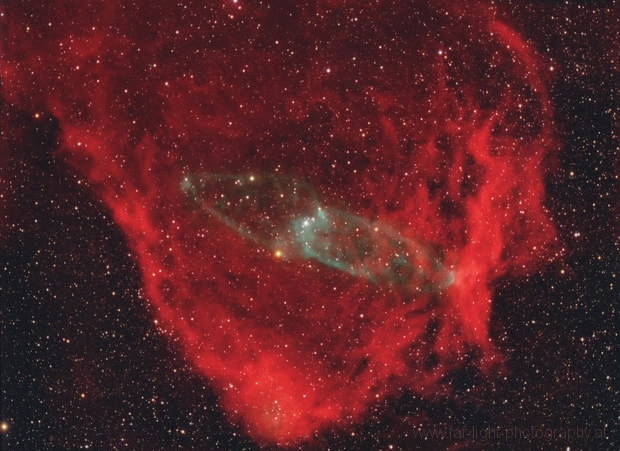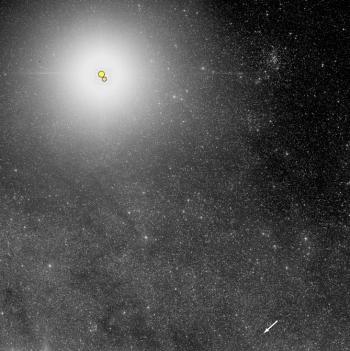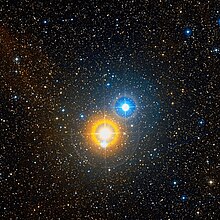DavidLeodis wrote:I like the image. The short line of 3 colourful stars in the top left quadrant reminds me of Orion's belt. I would be grateful if someone could please explain in simple terms why some stars in the image are blue and others yellow.
The color of the stars reflect their temperature.
While the star is on the main sequence, like the Sun, its temperature depends on its mass.
Rick Gomez/Blend Images/Getty Images
Think of it like this. A low-mass star has to "lift" its own mass in order not to collapse. Since it doesn't weigh much, it doesn't have to produce a lot of energy in order to "hold itself up".
Chang W. Lee/The New York Times
A high-mass star, on the other hand, has to produce a lot of energy in order to counteract its own gravity.
The energy that own Sun has to produce in order to "hold itself up" gives it a temperature at its photospere (its "surface" temperature) of a bit less than 6,000K. The visible light from the Sun is the main source of light on the Earth, and our eyes have evolved so that we see the light from the Sun (i.e., daylight) as neutral, or "white". The Sun almost always looks quite yellow in illustrations, but that is not its true color.
The two Sunlike components of Alpha Centauri,
plus Proxima Centauri (arrowed). Photo: ESA
A star that is less massive than the Sun needs to produce less energy than the Sun in order to fight its own gravity. Unless such a star is highly evolved, it will be quite faint, much fainter than the Sun. Its light will also be much more yellow-orange than the light of the Sun. An example is the binary star
61 Cygni. Its brightest component is 0.153 times the luminosity of the Sun, and the fainter component is 0.085 times the solar luminosity. Both components would photograph as yellow. Much fainter still is the nearest star outside the solar system,
Proxima Centauri. Proxima has a mass of only about 10% solar, and it shines, in visible light, only about one part in 15,000 as bright as the Sun. Its feeble light is orange.
Sirius and its (hot blue) white dwarf companion.
NASA, ESA and G. Bacon (STScI)
Stars more massive than the Sun have to fuse their hydrogen at a much faster rate to counter the inward pressure of their own mass. These stars also shine much brighter than the Sun. Sirius, the brightest-looking star in the sky, is about twice as massive as the Sun, but it shines about 23 times brighter. Its photosphere is also considerably hotter than the photosphere of the Sun, about 9,000K. Its light is far more dominated by shortwave, blue light than the Sun. In RGB images, Sirius will almost always look blue.
The Sun as a main sequence star and as a red giant at its maximum size.
A star that is on the main sequence, like the Sun, shines by fusing hydrogen to helium in its core. But a star's supply of core hydrogen is not infinite. After a star has used up its core hydrogen, its core will contract, releasing a lot of heat in the process, and at the same time its outer layers will expand. After a while the star will stabilize and start fusing its core helium into carbon and oxygen. But its outer layers will still be bloated and cool. The star is now a red giant. The temperature of the photosphere of the red giant will be cooler than the Sun's, about 4,000K versus ~6,000K for the Sun. The light of the red giant's photosphere will be far more dominated by red and yellow light than the photosphere of the Sun. A red giant will typically look yellow-orange in RGB images. So aren't red giants
red? No, only certain
extreme carbon stars are red.
Interestingly, you can see the colors of the stars for yourself using a good pair of binoculars, or better yet, a telescope. Watch out
Capella, whose color is similar to the Sun's. Check out
Vega right after you've looked at Capella, to see how much bluer it is. Then check out some red giants, from rather pale
Pollux, which is only a bit yellower than Capella, to more strongly colored
Dubhe and Arcturus. Then check out even more orange Betelgeuse and Antares, and go hunting for the even redder stars, like
Mu Cephei. But the reddest-looking ones will be a few carbon stars like
R Leporis.
Ann
EDIT: Uh, no. Sirius is
not the brightest-looking star in the Earth's sky. That honor goes to the Sun. Obviously.

 A Giant Squid in the Flying Bat
A Giant Squid in the Flying Bat






